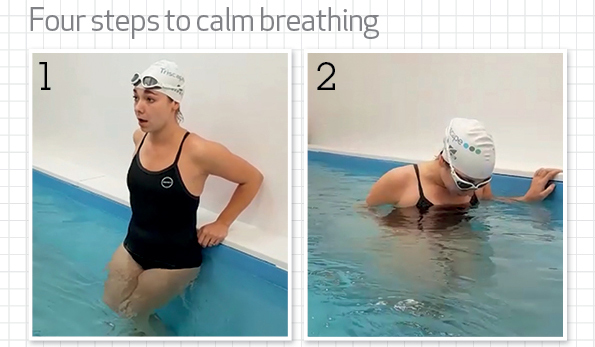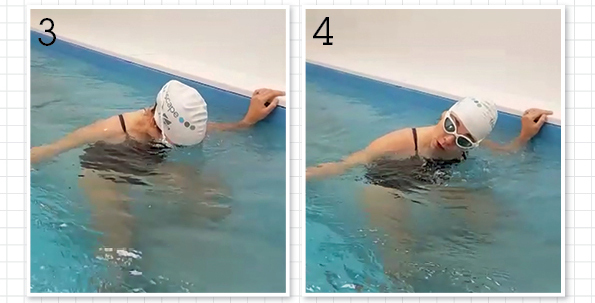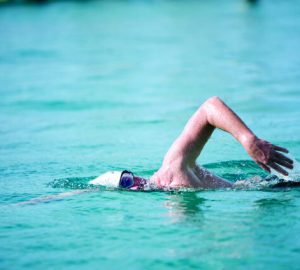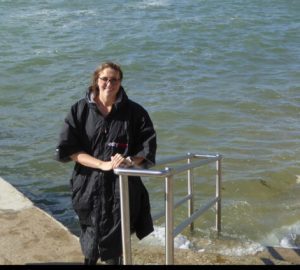How to master breathing when swimming
Keri-anne Payne explains the importance of breathing for front crawl.
Breathing is the most underrated skill taught to swimmers around the world.This is the same if a swimmer is a beginner or an elite level athlete. The one thing we as humans cannot live without is oxygen so why do so many people disregard it as an important skill to master when it comes to swimming?
We all have an inbuilt caveman instinct which is the need to have constant access to oxygen. As soon as our brain thinks we might not get access, it kicks into overdrive. Cortisol is released and our brain switches into ‘fight or flight’ mode.
What goes in must come out
So often we hear people taking massive breaths in as they swim. Their mouths are wide open sucking in as much air as they can in the few seconds they have when they turn to breathe. The issue with this is that our breathing always needs to be matched: when you breathe in a certain amount, you have to breathe out the same amount. Have a go right now as you read this – take a big breath in and see what happens. Now try to breathe in the same amount and breathe out just a little, breathe in again, then out a little again… uncomfortable right?
Try this at home
Try this little exercise so you can see what is happening to you when you breathe like this in the water. Start by lightly jogging on the spot, notice how you are breathing and how much you are breathing in and out. Now take a big lungful of air in as if you were ‘filling your lungs as quickly as possible’ – now breathe it all out. Keep doing this for two or three more breathing cycles. Then stop. Feeling light headed? Yes, that’s because you have just been hyperventilating yourself. Would you run like that? No, well then why do you swim like that?
Rhythm of the stroke
We coach clients to think about how much oxygen they are breathing in when they take a breath and challenge them to breathe in less, after all when do you ever fill or empty your lungs when you do any other sport? Breathing really sets the rhythm of your stroke and it needs to be calm and relaxed.
Out through your nose
The final piece of the puzzle when it comes to breathing and swimming is the way in which you do it. The easiest way to help regulate your breath when it comes to swimming is to breathe in calmly through the mouth when your body turns to the side and to breathe out calmly through your nose when your head is in the water. Through the nose I hear you say? Yes, breathing out the nose helps to keep the out-breath calm and relaxed which will help to ensure the in-breath is just as calm. This is the same for front crawl, breaststroke and butterfly.
There is no golden rule when it comes to bilateral or unilateral breathing (one side or both sides). As long as it feels relaxed and calm then breathe whenever you feel you need to. We would recommend not taking any more than four strokes as a maximum. Where bilateral breathing comes in handy is when you are swimming outdoors. If the waves are coming from the side you always breathe to then it’s good to be able to have a bit of respite and breathe to the other side.

1. Start by practising calm breathing on
the side of the pool, in the
mouth out
the nose.
2. Once this feels comfortable and natural then get in the water and if you feel comfortable then put your face in the water blowing bubbles out your nose as you do this. If you are still a beginner swimmer or learning how to put your face in the water then just put your face near the water so you can see the water move a little when you breathe out.

3. When it feels good
to do so start putting your face in the water, for now keep looking up when you breathe in.
Do this for at least 10 breath cycles and still feel calm.
4. Once you feel comfortable with the above, start to turn the head to the side as if you were breathing whilst swimming.
When this feels a bit more natural then try doing a few lengths of full stroke swimming (any stroke) thinking about breathing calmly and controlled.
Keri-anne Payne
is a double open water world champion, triple Olympian and Olympic silver medallist in the 10k open water marathon at the Beijing Olympics in 2008. She created the Straight-Line Swimming methodology with her husband, triple Olympian David Carry.







